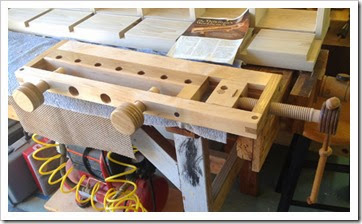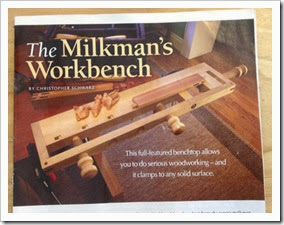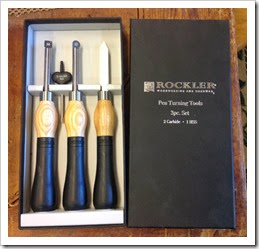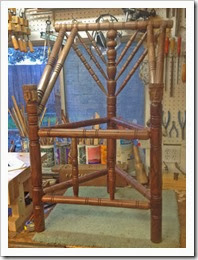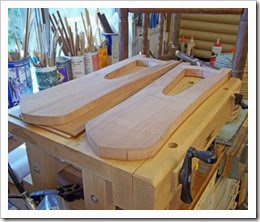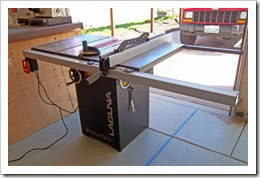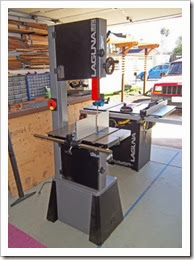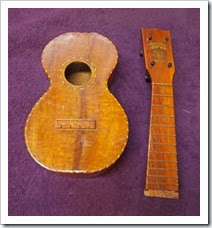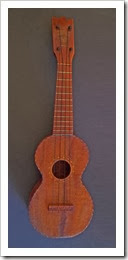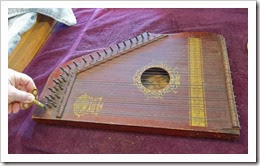It was a beautiful, sunny, cool Christmas day here in Santa Cruz. The sun is a welcome respite from the drenching we received for several weeks. We do need much more rain (we’re still in drought mode), but hopefully it won’t come in torrential downpours like it did a few weeks ago.
So, what’s been happening here since my last blog entry? In my last blog, I was just getting ready to be part of the Open Studios Art Tour. Unfortunately, after 13 years of decent sales, this was the first time there were no sales. Well, try, try again next year.
At the end of October and start of November I once again taught a woodcarving class at Cabrillo College. It was a small class of six people who all showed some talent that, with practice, could someday be very good carvers. One who exhibited very good talent is now one of my students here at my studio. I have three wonderful students who come nearly every week for two hour sessions. Classes range from carving, to wood turning, to instrument making, to general wood working. It’s great to see the progress each of them make.
In November, after teaching, I took a break. A friend of mine and I went on a short vacation. I started by driving to his place in Sacramento where we had a great time sampling craft beers and eating at new up-and-coming pubs and restaurants. 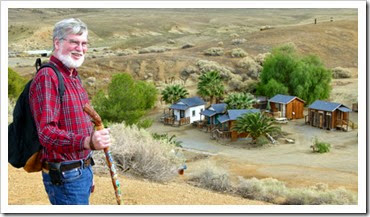 The next day we drove to Mercey Hot Springs, which is 20-30 miles south of Los Banos. There is an artesian mineral hot spring there that Indians have known about for hundreds of years. In 1912 a land developer bought the property and began building cabins and baths. In the photo, the two left cabins are where my friend and I stayed. These are originals built around 1915. Small, cozy, with gas heaters and a front porch with table and chairs, where we had wine, cheese, French bread, etc. The water in the baths is slightly sulfurous, but warm (around 102-105), and pleasant.
The next day we drove to Mercey Hot Springs, which is 20-30 miles south of Los Banos. There is an artesian mineral hot spring there that Indians have known about for hundreds of years. In 1912 a land developer bought the property and began building cabins and baths. In the photo, the two left cabins are where my friend and I stayed. These are originals built around 1915. Small, cozy, with gas heaters and a front porch with table and chairs, where we had wine, cheese, French bread, etc. The water in the baths is slightly sulfurous, but warm (around 102-105), and pleasant.
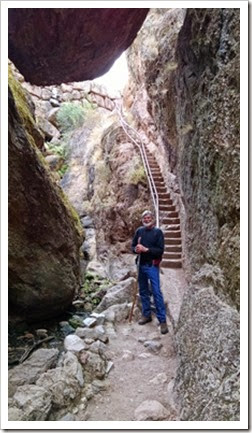 We did some hiking at Mercey, but the next day we went all out! We drove first to Tres Pinos for breakfast, then, by 10am, we were starting our 10 mile hike at Pinnacles National Park. We first hiked through the caves, then up and over the Ridge Trail. It threatened rain all day, but held off for the six hours we were on the trails. The Pinnacles are nice to visit any time of the year, but Spring time is really the best, with incredible wild flowers in bloom and the chance to see some of the growing population of California condors. Summer can be very hot, so bring lots of water. (Bring water anyway if you’re hiking any time of year.)
We did some hiking at Mercey, but the next day we went all out! We drove first to Tres Pinos for breakfast, then, by 10am, we were starting our 10 mile hike at Pinnacles National Park. We first hiked through the caves, then up and over the Ridge Trail. It threatened rain all day, but held off for the six hours we were on the trails. The Pinnacles are nice to visit any time of the year, but Spring time is really the best, with incredible wild flowers in bloom and the chance to see some of the growing population of California condors. Summer can be very hot, so bring lots of water. (Bring water anyway if you’re hiking any time of year.)
We spent the second evening at Mercey and left the next morning for the ghost town of New Idria, on the end of a rough, unmaintained road high in San Benito County mountains. New Idria was a quicksilver (mercury) mine that ran from the gold rush days up into the 1970s. Because of the mercury and lead contamination, that is still leaching out of the mines, machinery, and tailings, the main part of the town was fenced off in 2011 as a Superfund site.The creek that flows through New Idria is a sickly orange color. Contaminants from the mine have been traced as far away as the San Jaoquin River, which flows to the San Francisco Bay. Hopefully, a cleanup will happen soon.
This was a fun trip. Mercey Hot Springs was so remote, it is totally off the grid. For a relaxing time away from electronic devices, television, phones, etc., this is the place to go. For great hiking, camping, or picnicking, head for Pinnacles National Park. (It’s only a few hours from San Jose! Day trips are big there.) New Idria? It is a piece of gold fever history. However, there are no signs, no historical references, or no one around to ask about it. There are many references online, but nothing at the site.
Recent Work
Not much recent work happening on the instrument and furniture side of my crafting life. My wife and I are getting ready for a major remodel of our home, and we’ve been packing everything away and putting it in storage. I’m taking a sabbatical from Ron Cook Studios for at least 6 months, while I make new furniture pieces for our new home. I’ll be creating several live-edge pieces, including a new mantel for the fireplace, new coffee and end tables, and a raised live-edge counter on the kitchen island.
To keep the sawdust flying, I recently finished what is called The Milkman’s Workbench. I saved an article from the June, 2013, issue of Popular Woodworking, last year because I thought I’d like to make it. I found enough good pieces of wood in my stash to put one together, so I decided to finally do it. It took only a few days to make. This type of workbench is small, but handy for craftspeople who work in small spaces, like apartments or tiny workshops. It’s also handy for taking along for carving demonstrations.
The kitchen part of our remodel will have two new sinks. There’s a regular kitchen sink, and a bar sink on the island. To be able to cut vegetables over the sink, I’m putting together a cutting board that 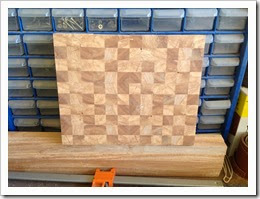 will fit nicely over one of the sinks. It is all salvaged urban forest wood from an old apple tree. The tree died and the owner gave me the trunk and a couple of thick branches. The tree had rotted in the middle, but I was still able to salvage some very good sections. I ripped it into boards and it has been drying for over a year. A few months ago I cut a couple of the boards into one inch square pieces, then started gluing them together. I’ll finish this after we get the sinks so I can fit it properly.
will fit nicely over one of the sinks. It is all salvaged urban forest wood from an old apple tree. The tree died and the owner gave me the trunk and a couple of thick branches. The tree had rotted in the middle, but I was still able to salvage some very good sections. I ripped it into boards and it has been drying for over a year. A few months ago I cut a couple of the boards into one inch square pieces, then started gluing them together. I’ll finish this after we get the sinks so I can fit it properly.
I’ve been doing a lot of woodturning, and a couple of my students have too. For smaller turnings, like pens, small spindles, or the noters like I do, I picked up a set of mini carbide turning tools. (Christmas present for myself!) These stay sharp much longer than standard turning tools and work well on my mini lathe.
Another present I got for myself is a new set of 8 inch dado blades for my table saw. I’ve been using an old 6 inch set for 30 years, and it’s been too hard to keep sharp. After nearly “burning” my way through a project, I bit the bullet (when a sale popped up) and got a new set of Freud dado blades. They cut through maple like going through butter!
Well, that’s about it for now. When I start working on the new furniture pieces for our remodel, I’ll be posting pictures of the processes, from start to finish, on my blog. Stay tuned!
I hope everyone has had a wonderful Holiday Season, and, to everyone, Happy New Year!


